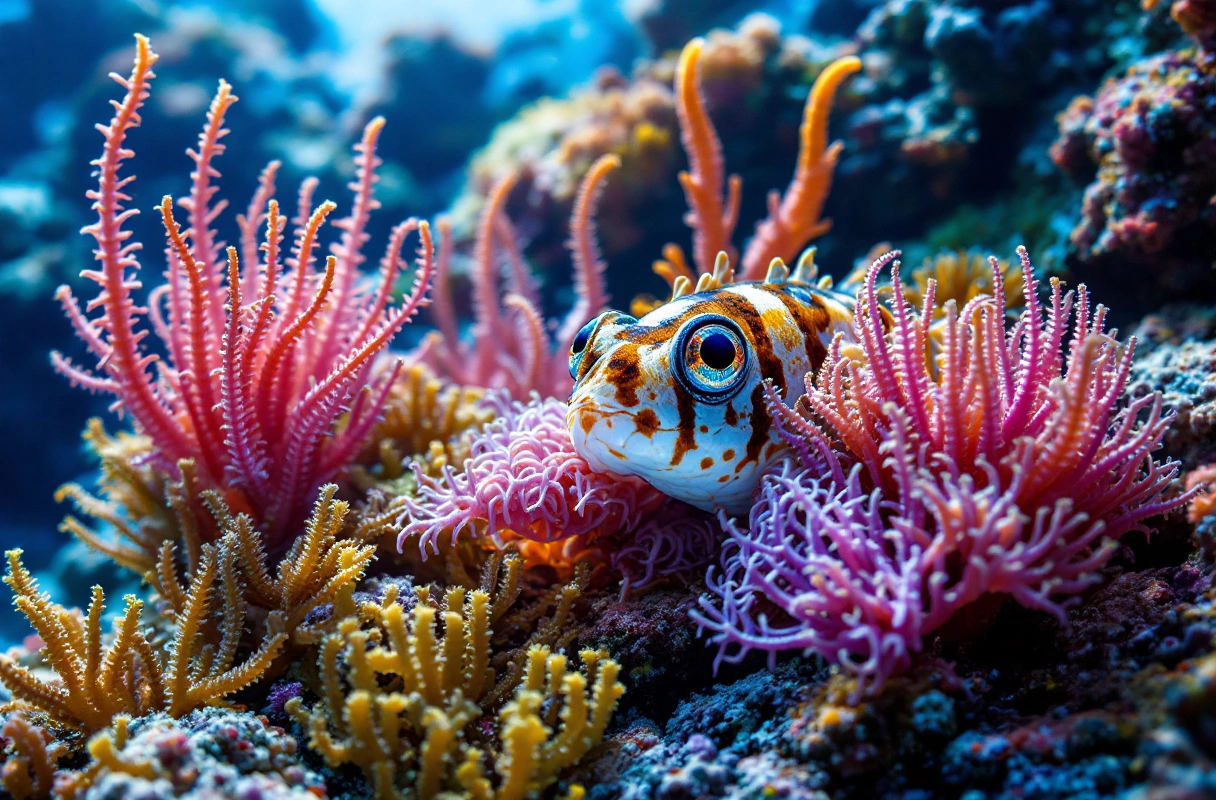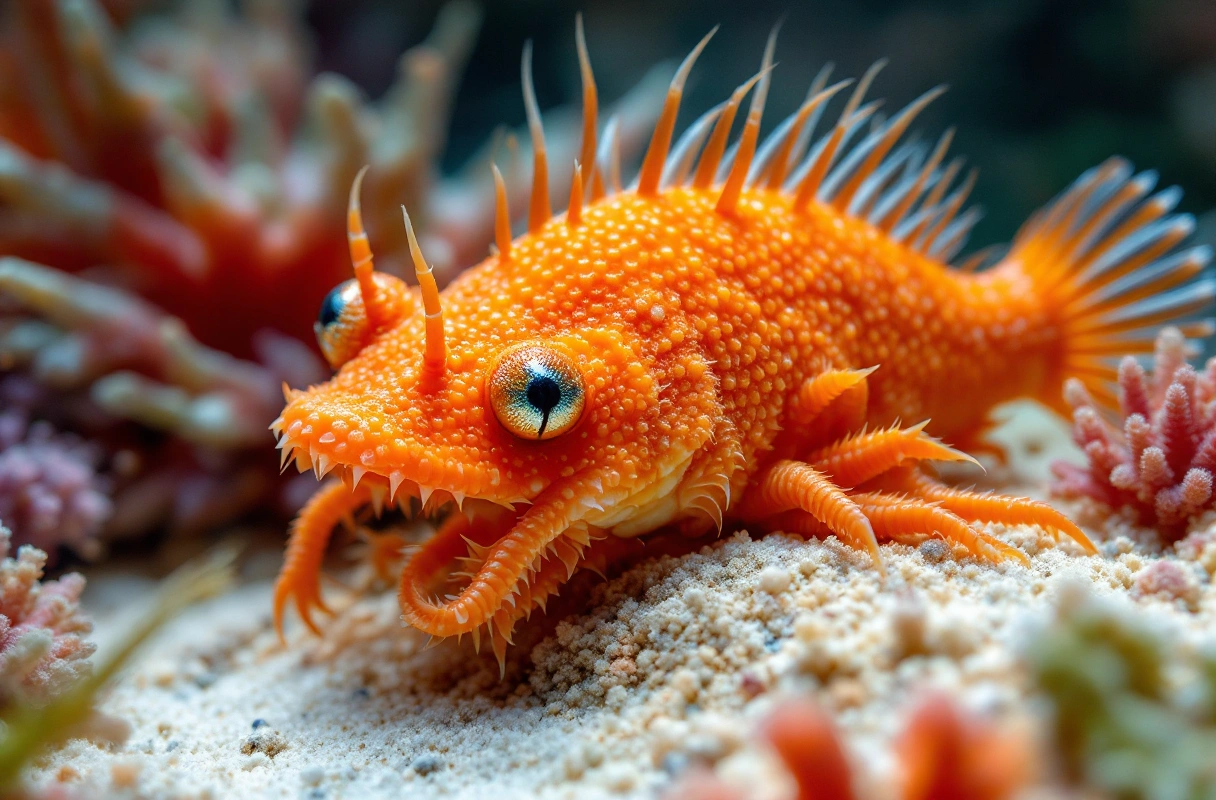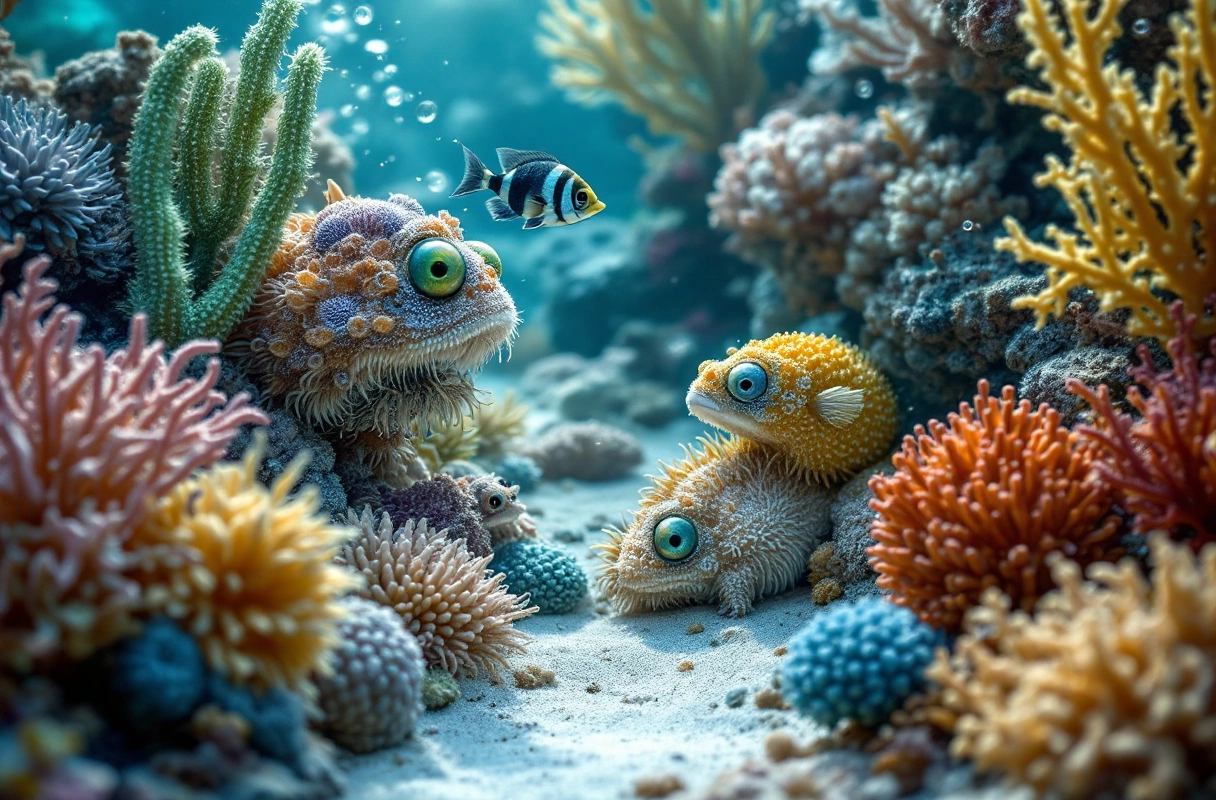
The ocean is a vast and mysterious realm, home to a diverse array of life forms known as sea creatures. From the vibrant coral reefs to the deep sea trenches, these organisms have adapted to thrive in various marine environments. Understanding these creatures is not only fascinating but essential for appreciating the ecological balance of our planet. This guide aims to introduce you to common sea creatures, their unique characteristics, and how they adapt to their surroundings.
In this article, we will delve into the most common sea creatures you might encounter, explore the field of marine biology, and discuss how these creatures adapt to their environments. Whether you are a nature enthusiast, a student, or simply curious about marine life, this guide will provide valuable insights into the underwater world.

Identifying sea creatures can be a rewarding experience, whether you're snorkeling, diving, or simply observing tide pools. Here are some of the most common sea creatures you might encounter.
Fish are perhaps the most recognizable sea creatures. They come in various shapes, sizes, and colors.
Clownfish: Known for their vibrant orange color with white stripes, clownfish are often found in anemones. They have a symbiotic relationship with these organisms, providing protection in exchange for food and shelter.
Blue Tang: Made famous by animated films, this fish has bright blue scales and a distinctive yellow tail. They inhabit coral reefs and are known for their herbivorous diet.
Invertebrates make up a significant portion of marine life and are essential to the ocean's ecosystem.
Octopus: These intelligent creatures are known for their problem-solving abilities and camouflage skills. They have eight arms lined with sensitive suckers, allowing them to taste and feel their environment.
Sea Urchin: With their spiny exterior, sea urchins are often found in rocky areas. They play a critical role in maintaining the health of kelp forests by grazing on algae.
Marine mammals are warm-blooded creatures that rely on the ocean for sustenance.
Dolphins: Known for their playful nature and intelligence, dolphins are highly social animals. They communicate through clicks and whistles and are often seen riding the waves near boats.
Sea Lions: These pinnipeds are characterized by their external ear flaps and long front flippers. They are often found lounging on rocky shores and are known for their vocalizations.
Marine reptiles, though not as numerous as other sea creatures, are vital to the ecosystem.
Sea Turtles: These ancient mariners travel long distances in search of food. They are known for their incredible navigation skills and are often found in tropical and subtropical waters.
Marine Iguanas: Unique to the Galápagos Islands, these iguanas are the only lizards that swim in the ocean. They have adapted to a marine lifestyle, feeding on algae.

Adaptation is a key concept in marine biology, allowing sea creatures to survive and thrive in their respective habitats. Here are some fascinating adaptations found in various sea creatures.
Many sea creatures have developed the ability to blend into their surroundings, making them less visible to predators and prey.
Cuttlefish: These cephalopods can change their color and texture to mimic their environment. This ability helps them avoid predators and ambush prey.
Leafy Sea Dragon: Resembling floating seaweed, the leafy sea dragon uses its leaf-like appendages to blend in with its surroundings, evading predators.
Different sea creatures have evolved unique feeding strategies that help them thrive in various environments.
Baleen Whales: These massive creatures filter-feed by taking in large volumes of water and using their baleen plates to trap small organisms like krill and plankton.
Starfish: Known for their ability to regenerate lost limbs, starfish have a unique feeding mechanism that involves extruding their stomachs to digest prey outside their bodies.
Physiological adaptations are crucial for survival in challenging marine environments.
Deep-Sea Creatures: Organisms like the anglerfish have adapted to extreme pressure and darkness by developing bioluminescent lures to attract prey.
Sharks: These apex predators have specialized sensory organs called ampullae of Lorenzini that allow them to detect electrical fields produced by other marine animals.

Understanding sea creatures also involves dispelling common myths and misconceptions that surround them. Here are some prevalent misunderstandings.
One of the most pervasive myths is that all sharks are dangerous and prone to attack humans. While certain species, like the great white shark, have been known to attack, the vast majority of sharks are harmless and play essential roles in maintaining the health of marine ecosystems.
Many people view jellyfish as simple, gelatinous organisms. However, they are complex creatures with intricate life cycles, including a medusa and polyp stage. Some jellyfish possess venom that is used for both predation and defense.
While many sea creatures are indeed cold-blooded, marine mammals, such as dolphins and whales, are warm-blooded. This physiological trait allows them to maintain a constant body temperature, which is crucial for their survival in varying ocean temperatures.
Marine biology is the scientific study of organisms in the ocean and other saltwater environments. It encompasses various aspects, including the biology, ecology, and conservation of marine life. Understanding marine biology is crucial for several reasons.
The ocean is home to an estimated 230,000 known species, with many more yet to be discovered. Biodiversity is essential for ecosystem resilience, as it ensures that marine environments can withstand changes and disruptions.
With the increasing threats posed by climate change, pollution, and overfishing, marine biologists play a vital role in conservation efforts. They provide valuable data and insights that inform policy decisions and help protect vulnerable marine ecosystems.
Marine biologists also engage in educational outreach, helping the public understand the importance of marine life and the need for conservation. This outreach fosters a sense of stewardship and encourages individuals to take action to protect our oceans.
Identifying sea creatures can be an enjoyable and educational experience. Here are some actionable tips to enhance your observations.
Familiarize yourself with local marine life by using field guides or apps that focus on regional species. This will help you identify common sea creatures in your area.
Participating in guided snorkeling or diving tours can provide valuable insights from experienced marine biologists. They can share information about the species you encounter and their ecological roles.
Keep a journal or create a digital log of the sea creatures you encounter. Take notes and photographs to help you remember their characteristics and behaviors.
Join online forums or social media groups dedicated to marine life. Engaging with like-minded individuals can enhance your knowledge and provide opportunities for sharing experiences.
When observing sea creatures, practice responsible behavior. Avoid touching or disturbing marine life, and be mindful of your impact on their habitats.
Understanding sea creatures and their habitats is essential for fostering a love for nature and science, which is at the heart of what the Banana Slug Club promotes. As an organization dedicated to engaging nature enthusiasts, students, and children, we believe that learning about the diversity of life in our oceans is as crucial as understanding terrestrial ecosystems.
The insights shared in this beginner's guide to identifying common sea creatures can inspire curiosity and respect for marine life. Whether you are exploring tide pools, snorkeling in coral reefs, or simply reading about marine biology, each experience contributes to a deeper appreciation for the natural world.
If you are eager to learn more about sea creatures and their environments, we invite you to visit the Banana Slug Club website. Here, you will find resources, activities, and community events that connect you with nature and encourage scientific exploration. Together, we can foster a love for the ocean and all its inhabitants, ensuring a brighter future for our planet.
Engage with us and explore the wonders of marine life today!
Get free resources, early access to new features and updates.
No spam. Just fun educational emails!